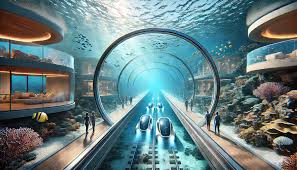
As the world faces overpopulation, rising sea levels, and land scarcity, scientists and engineers are exploring a radical solution: underwater cities. These submerged habitats could offer innovative living spaces while addressing environmental and urban challenges.
1. The Concept of Underwater Cities
Underwater cities are designed to be self-sufficient, pressurized habitats that exist below the ocean surface. Key features include:
- Pressurized living environments: Protects inhabitants from the high-pressure underwater environment
- Air and water recycling systems: Maintains breathable air and potable water
- Sustainable energy sources: Uses tidal, wave, or solar power for electricity
- Modular architecture: Allows expansion and adaptation to changing needs
The idea is not just futuristic fantasy—it’s grounded in engineering and marine science.
2. Why Scientists Are Interested
- Population pressures: Coastal urban areas are overcrowded; underwater cities could provide additional living space.
- Climate adaptation: Rising sea levels threaten existing cities; submerged habitats could bypass these risks.
- Resource access: Oceans are rich in minerals, food sources, and energy potential.
- Scientific research: Living underwater allows direct study of marine ecosystems and climate impacts.
3. Benefits of Underwater Living
- Sustainable lifestyle: Controlled ecosystems enable renewable energy use, food production, and waste recycling.
- Protection from natural disasters: Submerged cities are largely immune to hurricanes, tornadoes, or earthquakes.
- Innovative economy: New industries like aquaculture, oceanic research, and deep-sea tourism could flourish.
- Environmental stewardship: Underwater habitats may encourage more sustainable living practices and conservation.
4. Challenges to Overcome
- Engineering hurdles: Structures must withstand high pressure, corrosion, and extreme temperatures.
- Health concerns: Limited sunlight and confined spaces could impact physical and mental health.
- Cost: Building and maintaining underwater cities is extremely expensive with current technology.
- Legal and territorial issues: Ocean laws and property rights create complex regulatory challenges.
5. The Future of Underwater Habitats
Scientists envision semi-submerged, modular cities initially, which could evolve into fully submerged communities as technology improves. Advances in robotics, AI, and materials science may make underwater living safer, affordable, and sustainable within decades.
Final Thoughts
Underwater cities represent a bold solution to some of humanity’s greatest challenges. By combining innovation, sustainability, and oceanic exploration, these habitats could redefine how and where we live. While still experimental, the idea signals a future where the oceans are not just resources but potential homes.